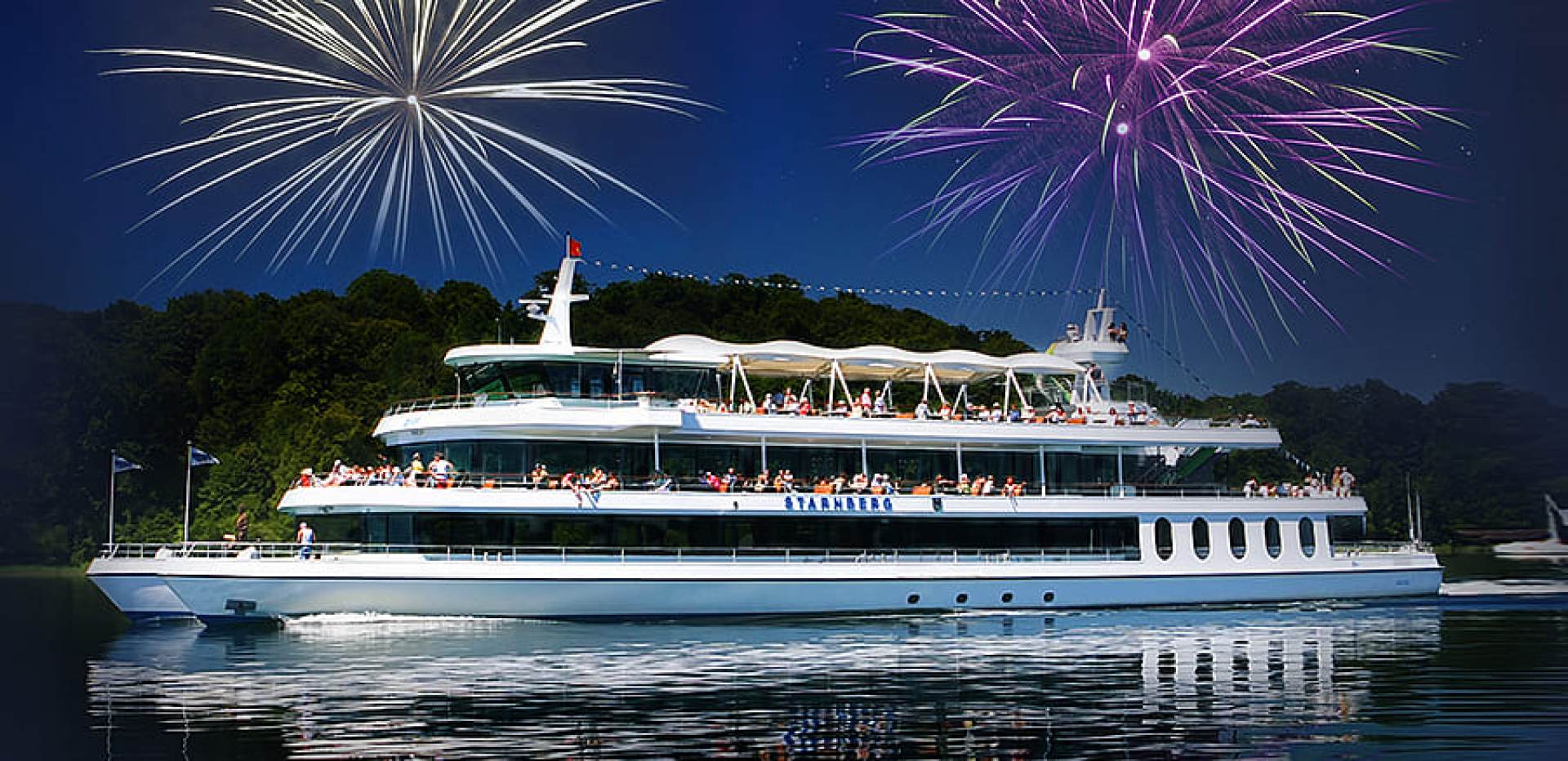Royal Water Music
Mo | Tu | We | Th | Fr | Sa | Su |
Royal Water Music
on Lake Starnberg
The Residenz-Solisten invite you to a very special boat trip. On board the MS Starnberg on Lake Starnberg, you will embark on a journey back to the time of the Wittelsbach rulers.
During the cruise across the lake, the focus is on the Royal Water Music. In the excellent acoustics of the salon on the main deck, the Residenz-Solisten perform masterpieces by composers such as Mozart, Vivaldi, and Handel, works that were once loved and promoted by the Bavarian ruling family. While enjoying a selected 3-course menu including drinks, you will be entertained with fascinating stories about the historical connections between the Wittelsbach dynasty and Lake Starnberg.
The MS Starnberg, with its three decks, was built in reference to the ceremonial ship Bucentaurus. Painted entirely in blue and gold, the ship of Bavarian Elector Ferdinand Maria was considered the most beautiful and largest rowing ship ever to sail on German inland waters. Modeled after the state ship of the Doges of Venice, it was launched in 1664, rowed by 150 oarsmen, to provide the Bavarian Elector and his entourage with a magnificent evening on the lake.
The journey with the Residenz-Solisten is a tribute to these historic voyages and has been a highlight of the concert summer for 15 years. The trip includes a sparkling wine reception, three concert parts, an exquisite 3-course menu including drinks, captivating stories from the time of the Wittelsbach rulers, and a fireworks display at the end of the cruise.
Program
A boat trip of a very special kind
Departure 18:30 – Starnberg
Arrival 22:00 – Starnberg
Culinary enjoyment is provided with a sparkling wine reception and a delicious 3-course menu including drinks.
Vegetarian and special allergen-free menus available on request up to one month before departure.
Performers
Residenz-Solisten
Program and cast
Munich Residence
The Munich Residence served as the seat of government and residence of the Bavarian dukes, electors and kings from 1508 to 1918. What began in 1385 as a castle in the north-eastern corner of the city (the Neuveste, or new citadel), was transformed by the rulers over the centuries into a magnificent palace, its buildings and gardens extending further and further into the town.
The rooms and art collections spanning a period that begins with the Renaissance, and extends via the early Baroque and Rococo epochs to Neoclassicism, bear witness to the discriminating taste and the political ambition of the Wittelsbach dynasty.

 EN
EN DE
DE IT
IT FR
FR ES
ES RU
RU JP
JP RO
RO
 Seating plan
Seating plan 